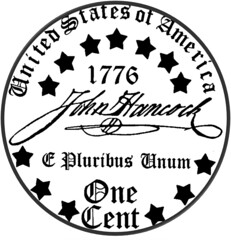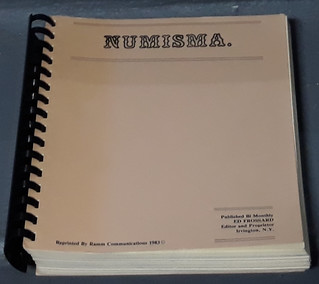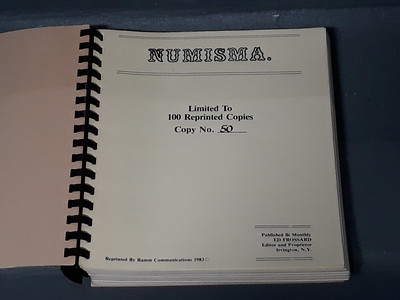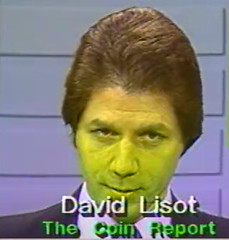
PREV ARTICLE
NEXT ARTICLE
FULL ISSUE
PREV FULL ISSUE
NOTES FROM E-SYLUM READERS: APRIL 16, 2023
More on Henry Voigt
"However, substantial new information has come out since 2007 that is relevant. Voigt's contributions were greater than Moulton or I realized at the time. Elias Boudinot's report to the Third Congress in 1795, which I recommend reading, goes to great lengths to explain the herculean task that Voigt faced in setting up the works for the Mint and getting it operating. I particularly call the reader's attention to the following: "It was also a considerable time before an engraver could be engaged, during which, the chief coiner was obliged to make the dies for himself." "What dies did he make? Everyone seems to agree now that Voigt made the dies for the 1793 half cents, Chain and Wreath cents. Some have claimed that Joseph Wright engraved the Liberty Cap cents of 1793, but there is no evidence that Wright ever worked at or was paid by the Mint for anything in 1793, nor did he request payment for anything in 1793. His estate was paid only for the dies for the 1792 Comitia Americana medal awarded to Henry Lee. Voigt also must have produced the Liberty Cap cent dies. All of this has been published over the past several years, much in The Numismatist and more in Penny-Wise. "In an article to be published later this month in Penny-Wise, I show by image analysis that the 1794 silver Flowing Hair designs are closely derived from Voigt's 1793 Liberty Cap design, so Voigt can truly be said to be responsible for all of the designs of 1794 as well, with the exception of the half cent. I had for so long assumed that the designs for the silver coins were completely separate from those for the copper coins (they do look different, superficially, after all, and all later designs were, indeed separate) that I did not consider the possibility worth checking it out until I received an email from Jasper Burns, who deserves credit for first suggesting this. "Voigt's contributions to the early US Mint and its coinage are even greater than Moulton's book claims. It is truly regrettable that no portrait of this man, who is in many ways the Founding Father of the Mint, is known to exist." Thank you! -Editor
To read Elias Boudinot's report, see:
To read the earlier E-Sylum articles, see:
More on Semiquicentennial Coin and Medal Prospects "The United States Mint, the Treasury/Bureau of Engraving and Printing, and the Postal service, need to take the lead in making new coins, paper money and stamps, for the America 250 project. Treasurer Marilyn Malerba can coordinate everything."
To read the earlier E-Sylum article, see:
The Spiral-Bound Numisma Reprint
"The only thing is that some of the plastic rings near the top have broken off. (This had been mentioned by the seller in his listing, so when I received the book it didn't come as a surprise.) I'm wondering if I should look into having it rebound, either with a new spiral binding or in hardcover, or just leave it the way it is." Thank you. I suspect any local copy shop or office supply store could replace the spiral binding - it's worth asking about. -Editor
To read the earlier E-Sylum article, see:
Bruce Banner Hulking Up
Chip Howell writes: "Isn't it Bruce Banner who Hulks up?" It is indeed. Please don't get mad at me! -Editor
To read the earlier E-Sylum article, see:
More on Osborne Coinage "Osborne bought TokensDirect (don't know when), a huge token manufacturer, who in turn had absorbed the Roger Williams Mint (mintmark RWM) in 2006. Osborne is a big outfit!" Yep - an 800-pound Gorilla of the field. -Editor
To read the earlier E-Sylum article, see:
More on African Manillas "The African manillas item shown in The E-Sylum were the less common French style manillas not the more common British. I wonder if the French types were really made from German metal? This could be some sort of irony. Also my understanding was that the Benin bronzes were mostly royal busts representing the Kings of the past and these are being returned rather than these other amazing bronze items. These Oba (and Eoba-= queen) busts were used to demonstrate the ruler's right to rule as he was following in his ancestors footsteps. They were placed on display to show power and would have been a great trophy for a conquering army to take as spoils. "My reading about these and other bronzes suggests that these were somehow considered by ignorant Europeans as having been made by some unknown foreign maker as the locals were thought too primitive to make such amazing castings. I haven't read that these other bronzes were part of the spoils but certainly could have been. As they were relatively unappreciated at the time, the weight of them might have made them less attractive booty. A knowledgeable collector also assures me that some Oba were exported legally as were many other bronzes."
To read the earlier E-Sylum article, see:
Wayne Homren, Editor The Numismatic Bibliomania Society is a non-profit organization promoting numismatic literature. See our web site at coinbooks.org. To submit items for publication in The E-Sylum, write to the Editor at this address: whomren@gmail.com To subscribe go to: https://my.binhost.com/lists/listinfo/esylum All Rights Reserved. NBS Home Page Contact the NBS webmaster 
|






